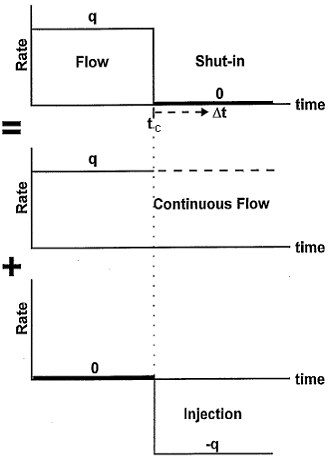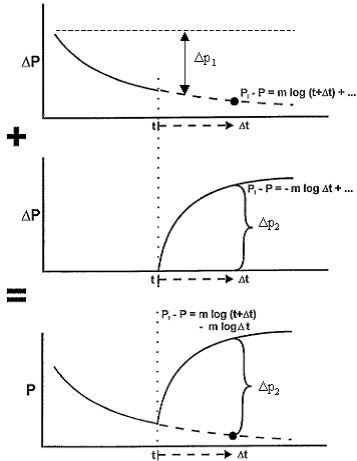Horner Time
Horner time is a time function used to specifically analyze buildup test data. Horner time is defined as the special case of superposition (radial) time for a single, constant rate flow period followed by a shut-in (i.e., a buildup).
Superposition in time of the radial flow equation for the case of a buildup test is as follows:


The constant rate solution (for oil or water) for analyzing radial flow data is:
Superposing this equation:
For the constant rate of q, starting at time zero:
For the constant rate of -q, starting at time tc:
Summing these, yields:
The time function in this equation is called Horner time defined as:
By plotting pws versus Horner time on a semi-log (radial) plot, radial flow buildup data appears as a straight line and can thus be analyzed to determine permeability (k) and apparent or total skin (s'). Note that based on the above definition, Horner time decreases as shut-in time (delta time) increases, and as shut-in time approaches infinity, Horner time approaches the limit of one. Due to this inverse relationship with shut-in time, the time axis on the semi-log (radial) plot is plotted in reverse so that increasing shut-in time is still represented from left-to-right.
Since Horner time is based on the radial flow equation, it should only be used for analyzing radial flow. For linear or bilinear flow, linear or bilinear time functions should be used instead for analysis. Horner time is valid only when the reservoir is infinite-acting and the rate prior to shut-in was constant. When the rate has not been constant, superposition radial time should be used instead.